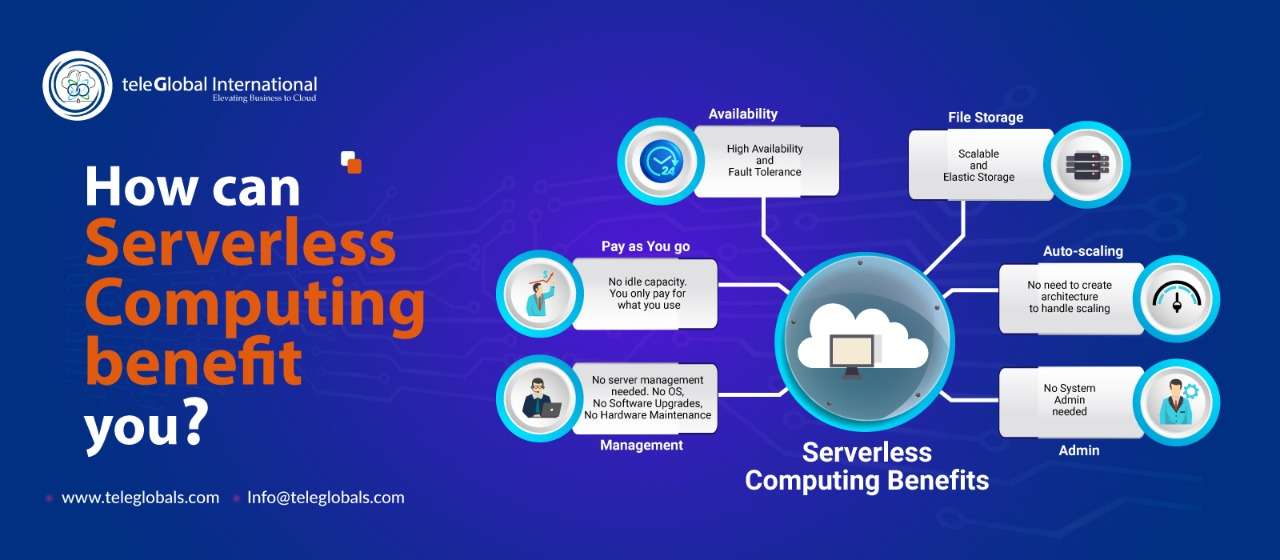
| Author: Ashish Kumar | Published: 13-Feb-2021 |
Serverless Computing: Is it for you?
Let’s start by accepting that the term Serverless itself is a bit of a misnomer. Without a server there really can’t be any computing. What Serverless Computing does is, hide the server from you, take away the hassle of maintaining hardware and software, and give you all the computing muscle you need, without any idle capacity.
In a traditional IT environment, i.e. server-based, you typically have a 3-tier architecture, viz: a database layer, where the database sits; an application layer, where your apps run; and the presentation layer, interface users interact with. A user can thus interact with your application in as many ways as your application will support—a web browser, mobile, or connected device (think: IoT)
What this means is that before you even start working on your (server-based) app, the onus is on you to set up your server, install the OS, install needed software; and regularly manage all this, i.e. take care of hardware, update software, manage operating systems. Don’t forget, you also need to ensure your application is always available; this means installing load balancers and managing the whole set up. The costs mount up quickly and they never stop.
With Serverless Computing you can do away with all this completely, and focus on writing your application code, with everything that involves. You don’t need to bother about buying and updating hardware, maintaining servers, managing operating systems, installing or updating software to manage. What’s more, you never need to worry about under-provisioning or for that matter over-provisioning. Your applications will enjoy high availability, and fault-tolerance by default. So you’re free to concentrate on working on your core application logic and building your application knowing neither scalability nor provisioning, will pose a problem. Ever.
Serverless Computing Benefits
When you compare this cost with a traditional IT setup, it quickly becomes clear how much you save. For instance: Assume you have a server configured for 100 GB of memory and you’re using only 5 GB. You, nevertheless, are still liable to pay for the 95 GB that’s sitting idle. Thus, serverless architecture frees you from paying for idle resources: Use 5 GB, and you only need to pay for 5 GB.
AWS Lambda scores high in this department, charging you by the millisecond: the moment your function ceases to run, your meter stops. Say your code runs for 100 milliseconds; you’re charged for this much and no more. The savings can be substantial.
A Word of Caution: Serverless Disadvantages
It’s not all roses though, serverless does have its drawbacks.
In a nutshell
While serverless doesn’t lend itself to some situations, such as long tasks, and there can be security concerns, and you need to be aware of vendor lock-ins, serverless architecture is nevertheless redefining the way applications are written and developed, freeing developers to focus solely on code.
Third-party services, such as AWS Lambda can help you do away with the need to set up and configure physical resources, and with billing on a milli-second basis, your savings can be substantial.
Still not sure if serverless is for you? TeleGlobal can help. As independent providers, and experts with AWS, Azure, GCP, and a few more, we can advise on feasibility and help you take the next step towards digital transformation through efficient, agile, and cost-effective serverless architecture.
 close
close

Hi there! At TeleGlobal, we turn your cloud vision into AI-accelerated reality. What challenge can we help you solve?
Powered by ![]() teleBot
teleBot